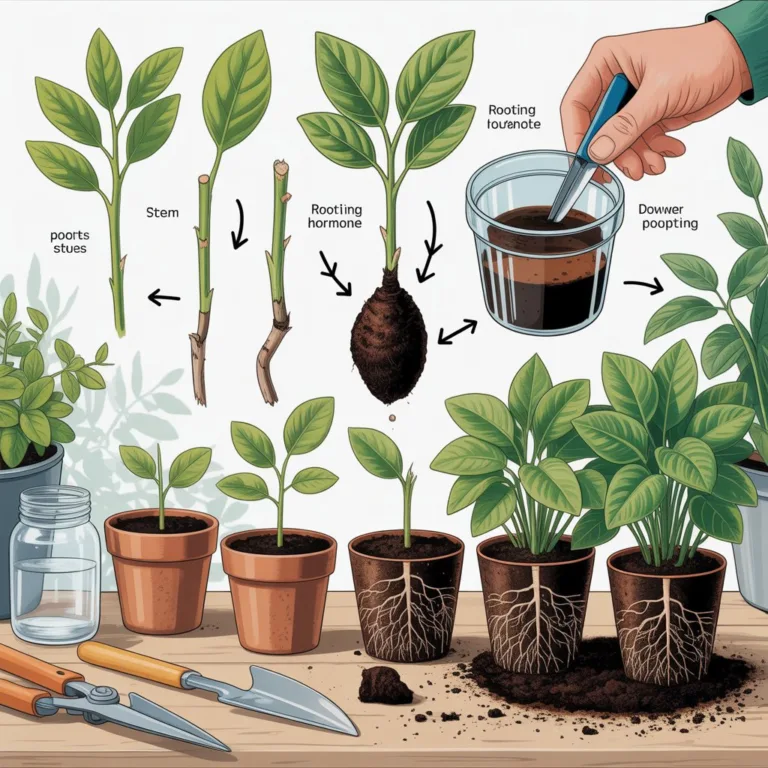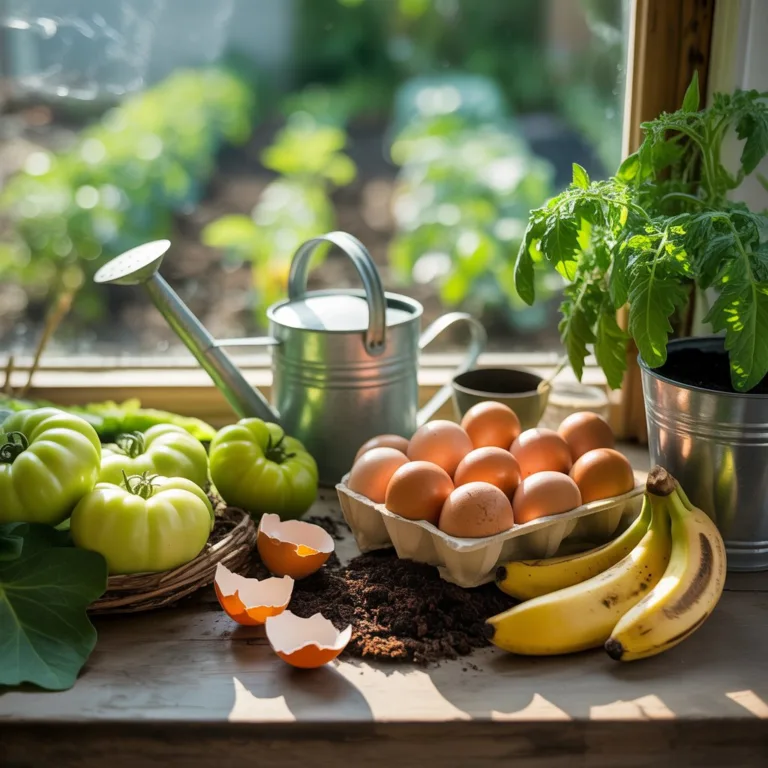Gardening is a rewarding activity that connects us with nature, improves our living spaces, and provides fresh, healthy produce. However, successful gardening requires an understanding of how different climates affect plant growth throughout the year. Seasonal care is essential to maximize plant health, prevent diseases, and encourage vibrant blooms and high yields. By tailoring gardening strategies to the specific conditions of each climate, you can create thriving gardens, whether you live in a tropical region, temperate zone, arid area, or cold environment.

Adapting plant care according to seasonal changes not only improves productivity but also reduces water use, minimizes pest infestations, and enhances soil quality. Every garden has its own unique set of conditions, and understanding how temperature, rainfall, humidity, and sunlight interact with plants allows gardeners to make informed decisions. From watering and fertilization schedules to pruning techniques and pest management, a climate-aware approach ensures a resilient and productive garden all year round.
Understanding Climate Zones and Their Impact on Gardening
Tropical Climates
Tropical climates are characterized by warm temperatures year-round, high humidity, and distinct wet and dry seasons. Plants in these regions often thrive in heat but can be sensitive to excessive water during rainy periods.
- Watering Considerations: Tropical gardens need careful monitoring to prevent root rot during rainy seasons while ensuring adequate moisture during dry spells.
- Soil Management: Frequent rainfall can leach nutrients from the soil, so regular composting and organic fertilization are essential.
- Pest Control: Warm, humid conditions favor fungal diseases and insect infestations. Implementing preventive measures like neem oil sprays and regular pruning can maintain plant health.
Temperate Climates
Temperate zones experience four distinct seasons, with moderate temperatures and varying rainfall. Seasonal plant care must adjust to fluctuating weather conditions, including frost, heat waves, and rainfall patterns.
- Spring Planting: Start seeds indoors or in greenhouses to protect seedlings from late frosts.
- Summer Care: Focus on irrigation, mulching, and pest management, especially during hot spells.
- Autumn Preparation: Prepare soil for winter by incorporating organic matter and planting cover crops.
- Winter Protection: Use frost cloths, cold frames, and mulching to protect sensitive plants.
Arid and Semi-Arid Climates
Arid regions face intense sunlight, high temperatures, and limited rainfall. Drought-tolerant species and efficient irrigation methods are crucial for gardening success.
- Water Efficiency: Drip irrigation, soaker hoses, and mulching reduce water loss and maintain consistent soil moisture.
- Soil Care: Sandy soils in arid regions benefit from organic matter additions to improve water retention.
- Plant Selection: Opt for native or drought-tolerant plants like succulents, herbs, and hardy vegetables.
Cold and Alpine Climates
Gardening in cold climates requires strategies to extend the growing season and protect plants from frost, snow, and extreme temperature fluctuations.
- Greenhouses and Cold Frames: These structures provide a controlled environment for seedlings and sensitive plants.
- Season Extension: Row covers, cloches, and hoop tunnels protect plants from frost and extend the growing season.
- Winter Planting: Certain vegetables like kale, spinach, and carrots can thrive in cold conditions with proper protection.
Seasonal Gardening Practices
Spring
Spring is the season of renewal, offering the perfect conditions for planting, soil enrichment, and pest prevention.
- Soil Preparation: Test soil pH and nutrient levels, amend with compost, and till lightly to improve aeration.
- Seed Starting: Begin seeds indoors or in greenhouses, particularly in temperate and cold climates.
- Early Pest Management: Monitor for pests emerging from winter dormancy and use organic treatments if necessary.
Summer
Summer requires attentive care to cope with heat stress, increased pest activity, and high evaporation rates.
- Water Management: Deep, consistent watering in the early morning reduces evaporation and helps roots grow deeply.
- Mulching: Organic mulch retains soil moisture, regulates temperature, and suppresses weeds.
- Pruning and Training: Remove dead or overcrowded branches to improve airflow and sunlight exposure.
Autumn
Autumn is ideal for preparing the garden for winter and ensuring soil health for the next season.
- Planting Cover Crops: Legumes and clover improve soil fertility and prevent erosion.
- Harvesting: Gather crops before the first frost, especially in temperate and cold climates.
- Composting: Use fallen leaves and plant residues to create compost for spring planting.
Winter
Winter focuses on protecting plants, planning for the next growing season, and maintaining garden structures.
- Protecting Plants: Use frost cloths, cold frames, and mulch to shield sensitive species.
- Soil Maintenance: Avoid walking on wet or frozen soil to prevent compaction.
- Planning and Research: Identify crops suitable for early spring planting and order seeds in advance.
Practical Tips for Each Climate
Tropical Gardening Tips
- Use raised beds to improve drainage in heavy rainfall areas.
- Plant pest-resistant varieties to reduce chemical interventions.
- Schedule irrigation around rain patterns to prevent overwatering.
- Incorporate shade trees or structures to protect sensitive plants from intense sun.
Temperate Gardening Tips
- Utilize succession planting to ensure continuous harvests.
- Rotate crops to prevent soil nutrient depletion and reduce pest buildup.
- Invest in lightweight row covers to protect early seedlings from late frosts.
- Mulch heavily in summer to conserve water and regulate soil temperature.
Arid Gardening Tips
- Apply thick mulch layers to reduce soil temperature and evaporation.
- Group plants with similar water needs together for efficient irrigation.
- Choose native or xerophytic plants adapted to extreme heat.
- Use reflective surfaces or shade structures to prevent sunscald on vulnerable plants.
Cold Gardening Tips
- Use insulated containers and raised beds to prevent soil freezing.
- Plant cold-hardy vegetables in late summer for winter harvesting.
- Cover crops like rye or winter wheat protect soil from erosion and nutrient loss.
- Utilize windbreaks to reduce frost damage and heat loss.
Sustainable Practices for Year-Round Gardening
- Composting: Reduces waste and enriches soil naturally.
- Rainwater Harvesting: Collect and store water for irrigation in dry periods.
- Organic Fertilizers: Use compost, manure, and seaweed extracts instead of chemical fertilizers.
- Integrated Pest Management: Encourage beneficial insects, use physical barriers, and apply organic sprays.
These sustainable strategies not only reduce environmental impact but also enhance plant health and yield across all climates and seasons.
Adapting to Microclimates
Every garden has microclimates—small areas with unique conditions influenced by sun exposure, wind patterns, and terrain. Understanding microclimates allows gardeners to:
- Plant heat-sensitive crops in shaded areas.
- Place wind-tolerant plants in exposed zones.
- Adjust irrigation and mulch based on local soil moisture and drainage.
By observing and mapping your garden’s microclimates, you can make precise adjustments that improve overall plant growth and resilience.
Educational and Community Benefits
Seasonal gardening offers learning opportunities and social benefits:
- Hands-On Learning: Children and adults gain practical knowledge of plant biology, weather patterns, and sustainability.
- Community Engagement: Seasonal gardens can foster local connections, workshops, and shared produce initiatives.
- Research and Experimentation: Observing plant responses across seasons encourages experimentation with new techniques, crop varieties, and eco-friendly solutions.
Troubleshooting Common Seasonal Challenges
- Frost Damage: Use row covers, mulch, and insulated containers.
- Heat Stress: Mulch, shade cloths, and early morning watering can protect plants.
- Pest Outbreaks: Encourage natural predators, implement crop rotation, and apply organic sprays.
- Nutrient Deficiencies: Test soil regularly and amend with compost or organic fertilizers.
Each season presents its own challenges, but careful observation, preparation, and adaptation can prevent most problems before they escalate.
Seasonal plant care tailored to climate not only ensures healthy, productive gardens but also promotes ecological balance, sustainability, and enjoyment throughout the year. By understanding the needs of your garden during each season, you can optimize growth, protect plants from pests and diseases, and maintain soil fertility. Observing weather patterns, adjusting irrigation, selecting appropriate crops, and integrating sustainable practices allows gardeners to achieve thriving gardens regardless of location. Experiment with techniques, learn from seasonal changes, and share your experiences to inspire others and cultivate a lifelong passion for gardening.

Sofia Greenfield is a sustainable gardening expert and environmental educator who inspires families and urban gardeners to cultivate green spaces responsibly. She shares practical tips on growing vegetables, herbs, and flowers using eco-friendly and recycled materials, emphasizing the joy of gardening while protecting the planet.



